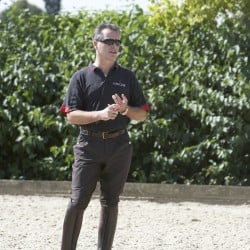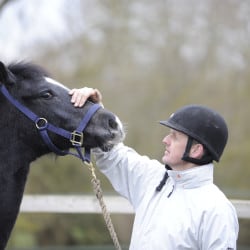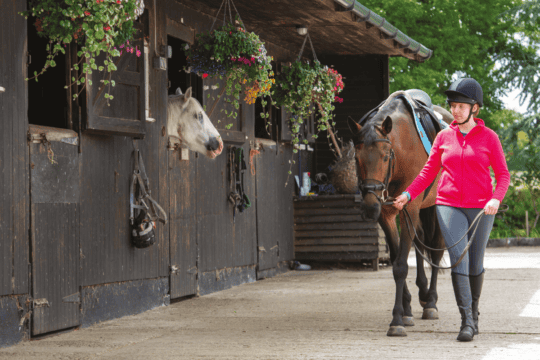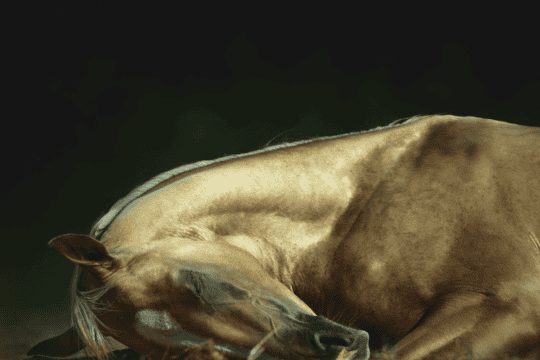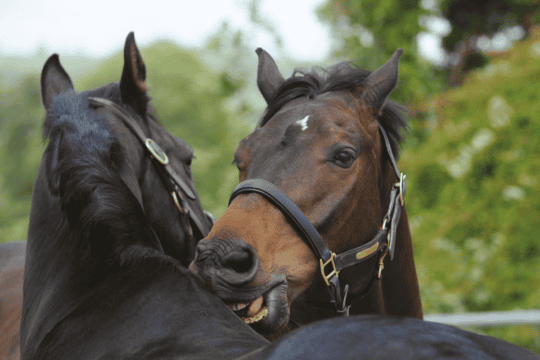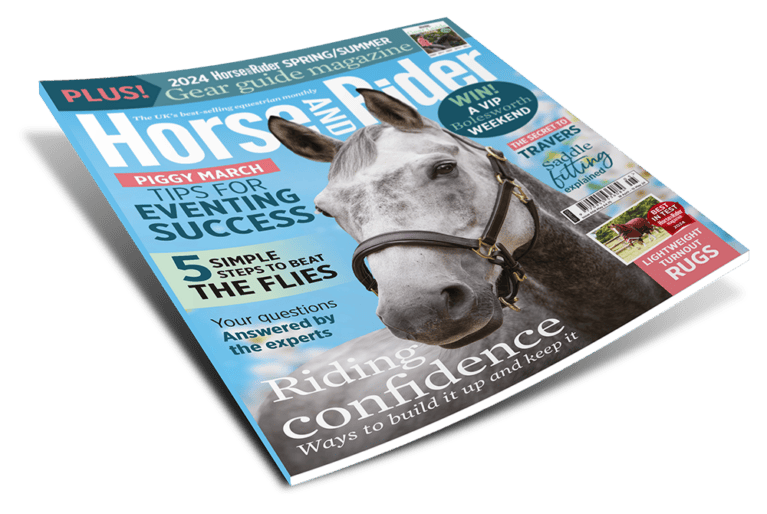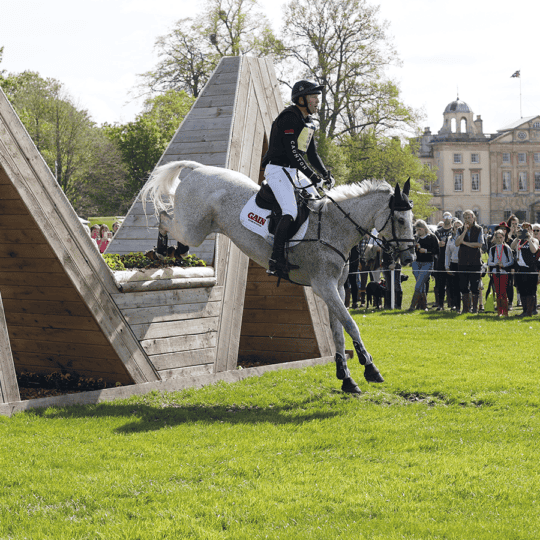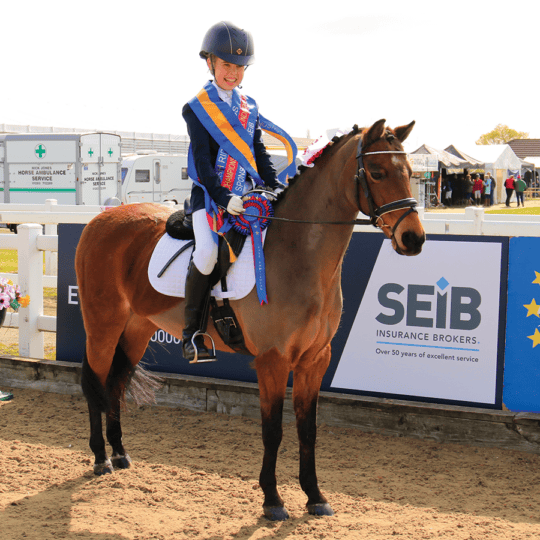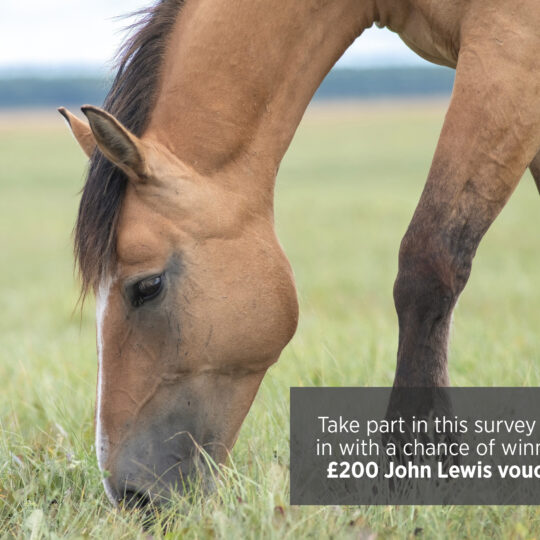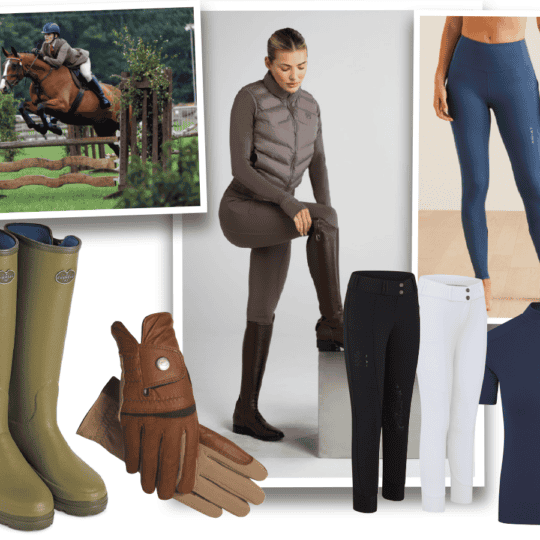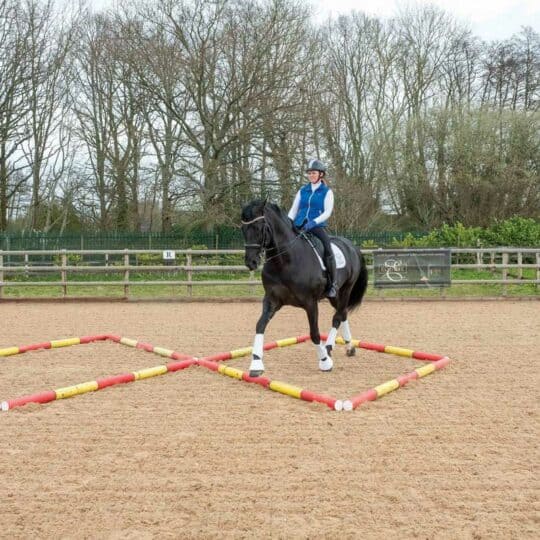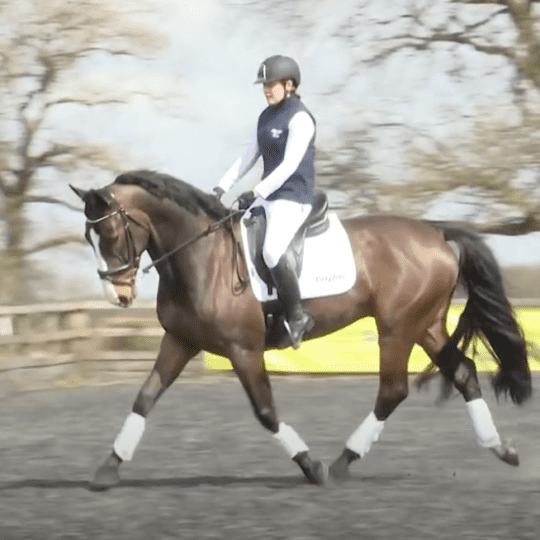Balancing your horse’s needs as a grazing, social animal and your desire to wrap him up in cotton wool are one of the biggest challenges as a horse owner – here’s how experts try to get the balance right
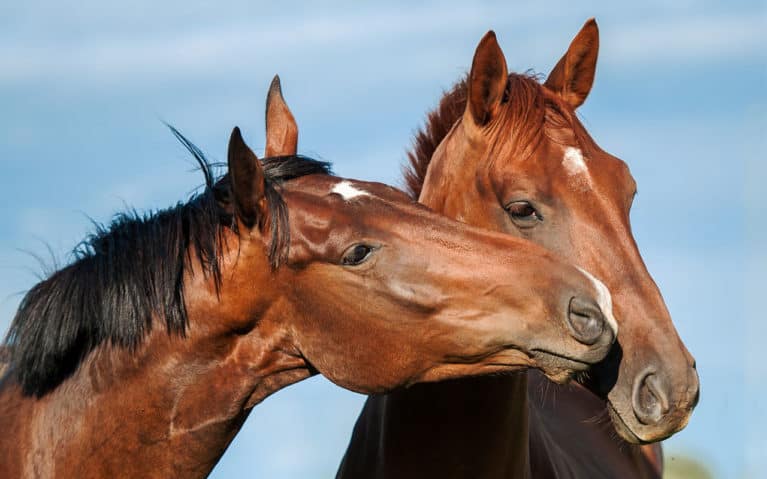
We all know that being turned out is the most natural way for us to keep our horses. And yet every horse owner has had to contend with an injury – whether routine or exotic – that their horse has incurred in the field. Individual turnout seems increasingly popular at many livery yards, although horses at many big show centres, studs and professional yards seem to manage to live in company and in harmony. Horse&Rider spoke to the experts to find out the secrets to a happy, injury-free horse.
Create a safe environment
The first and most important thing you can do to ensure your horse’s safety in the field is to make sure the paddock you turn him out in is safe and that the horses are kept as content as possible. The easiest part is keeping the field free from hazards – avoid using unsuitable fencing, such as barbed wire and stock fencing, remove poisonous plants, check regularly for holes and remove any objects your horse could injure himself on. However, keeping horses happy in the paddock isn’t always so simple.
Behaviourist Anna Saillet explains the most common causes of upset: “Resources such as hay, feed, water and shelter can be very important for some horses, and a flashpoint for bickering. Allowing for multiple feed stations, troughs that aren’t boxed in a corner and at least two entries into field shelters can help diffuse tension. Round bales don’t really work for horses, because their instincts to wander and eat are confused and frustrated, and bickering seems to quickly escalate.
“Also, when horses guard the gateway, it’s often a sign that there isn’t enough to do in the field – whether that’s as a result of poor grazing or not enough hay available. So always make sure they have plenty to eat to keep them entertained.”
For David Sheerin, being aware of herd dynamics is key to keeping the peace among his horses: “When horses are turned out in big groups, I’ve learnt that routine is everything when it comes to preventing turnout injuries. The horses come in and go out in shifts – they’re either brought in at 9.00 or at 15.00, depending on the daily lesson schedules. This seems to help to maintain the status quo in the horses left behind in the field.”
Herd dynamics is also an important consideration for Angelica Logan: “We have one group of horses where two herd members come in at night – one needs extra feeding and one is being roughed off slowly. Two is a nice number to come in together and they seem to reintegrate easily back into their group in the morning. We watch carefully for any signs of bullying and may move a horse to another herd if we think he will fit in better within another group dynamic.
“I think you can limit the risk of injuries in the field by establishing small herd groups, being vigilant about pasture management to maintain good-quality grazing and rounding the corners on post-and-rail fencing. When we feed hay, it’s put out in multiple piles on the ground, far away from the fence and well spaced out, beyond kicking distance of each other.”
Turnout injuries aren’t just for horses!
If you don’t keep yourself safe, you can’t keep your horse safe. David Sheerin says that, in his experience, the act of turning a horse out into a field is the most dangerous thing an owner can do. He insists that handlers under his care wear hats and gloves, and ensure their own safety by following these steps when turning a horse out…
Lead the horse through the gateway. Once in the field, turn the horse towards the gate so you can close it.
Back or turn the horse away from the gate so you have enough space to step back away from him should he kick out when you let go.
Feed the horse a titbit to help keep his attention as you slip the headcollar off.
Step back and away from the horse, keeping your eye on him until you are safely behind the gate.
Top tip
It works well to turn out horses of different ages together. Anna Saillet advises against creating a herd of youngsters, as it is similar to having a group of teenagers left alone in a room – trouble is sure to follow! But be mindful of turning elderly horses or those with an injury out with playful youngsters, as overexertion could put them at greater risk of hurting themselves.
Gender separation
Mares and geldings can, and often do, live out happily together. However, when a mare comes into season and natural instincts take over, it can lead to the odd disagreement. For this reason, David Sheerin likes to keep the girls separate from the boys: “We split our turnout herds by gender, because over the years we’ve found that there are fewer scuffles when the girls and boys aren’t together.”
Angelica Logan agrees: “We organise our horses into same-sex herds of between four and eight horses per group. Within these mini-herds, each horse seems to be able to find his natural social home. Each group is as individual as the characters within it. For instance, we have a very playful group of geldings, who like nothing better than to pull each other’s rugs off. We keep a really close eye on them and sometimes have to go in and put their clothes back on at midday!”
So injury is less likely when mares and geldings are turned out separately, but what about stallions? Tessa Clarke explains how she turns out her stallions so they can be in the presence of other horses, yet remain settled and safe: “Our stallions are turned out individually in stallion paddocks, which have post-and-rail fencing as well as a hedge along one side.
“While the stallions don’t have direct contact with any horses over the fence, they do have a view over the property, and can watch the comings and goings of the mares and foals in the distance. I believe it’s better for the stallions to be able to see what’s happening around them than to stare at a wall and spend all their time imagining what’s happening on the other side.
“A mature breeding stallion such as Cevin Z will take comfort from keeping watch over his family of mares and foals from a bit of a distance. And the mares are keenly aware of Cevin’s movements, which I think helps get their minds and bodies ready for the breeding season.”
Top tip
It’s advisable to remove the hind shoes before horses are introduced to reduce the damage caused by kicks.
Did you know?
Every time you disturb the turnout group, it disrupts the herd dynamic. For example, each time the group is brought in during the day and turned out again at night, the horses completely review and re-establish the pecking order.
Developing a
keen eye
No matter how careful you are, an injury in the field is almost inevitable at some point. But by improving your observational skills, you can catch things early and may even be able to prevent them happening. Tessa Clarke explains: “One of the most important skills you can develop is the ability to watch horses carefully while they’re turned out. When people begin their careers working at a stud, they watch for textbook signs of injury or abnormal behaviour. After a lifetime of watching horses carefully, what you see becomes more subtle and nuanced.
“On my walk from the lab to the office at the stud, I’ll have scanned the far fields, and looked at the maternity paddocks, the barns and foaling boxes, and can tell you pretty much what every horse on the property is up to, including who is lying down and which horses have struck up friendships. And if it looks like some bad weather might be coming in, we’ll prepare to bring in those who’ll need to come in.
“As well as regular checks, we look at the horses in the fields as we go about our everyday activities, counting mares and foals, noting who is up and who is resting, and are always on the lookout for unusual behaviour.”
It’s a similar situation at Angelica Logan’s stud: “It’s absolutely critical that the horses are checked regularly – ours are thoroughly checked morning and evening, as well as watched throughout the day.”
Safe introductions
Your horse is most at risk of injury when introducing him to a new herd, as there is often tension and aggression between herd members. Anna Saillet explains why this is and how you can make introductions smoother: “Horses are social animals who thrive on knowing their place in a herd.
“In most livery yard settings, horses are constantly coming and going, and social groups are always changing. Every time a horse is added or taken away, the entire hierarchy has to be renegotiated. This can make horses feel insecure and when they are put in challenging situations, such as a group being turned out together, they might not behave as brilliantly
as they would if they were part of a settled, established herd.
“In a natural setting, your horse would have gathered a lot of information about the other horse he was about to meet long before they were physically close to each other in a constrained space. Most of these details, such a age, sex, health and fertility, would have been gathered by smelling each other’s droppings, so physical introductions would be less charged and simply the last piece in the puzzle.
“We can help smooth over introductions and hopefully lessen the chance of injuries in the field by encouraging scent swapping. This involves allowing horses to smell each other’s droppings and belongings to help them establish roughly where the new horse will sit in the social order before there are any physical introductions.”
Top tip
If your horse is unsociable with other horses, gets into trouble or seems to be accident prone, the first reaction is often to isolate him from other horses. However, Anna Saillet says that this can make the problems worse. Instead, she recommends trying to think of ways to teach him new turnout habits.
“To scent swap, take fresh droppings from the new horse and put them in the field with the established group. Then allow the new horse to sniff the rugs and droppings from the horses he will eventually be turned out with.
“When horses are allowed to meet each other, I prefer to arrange this over a safe barrier initially, like a post-and-rail fence, when they are loose and not influenced by handlers on the end of a lead rein. Allow them time to sniff and back away, graze, watch and gather more information about their prospective field mates.
“Injury-free, stress-free introductions are a carefully managed, slow process. But by letting your horses discover what they need to know before they are in physical proximity, you will take a lot of the anxiety out of the introductions and give the horses the best chance to behave cordially and without fear.”
Turning out a fresh horse
Sometimes, other field mates aren’t the problem when it comes to potential turnout injuries – a horse who is fresh or hasn’t been able to go out for a while can do significant damage to himself while letting off steam in the field. David Sheerin has some great tips for managing this situation: “If a horse has had a period of limited or no turnout – for example, to rehabilitate an injury or if the fields are waterlogged – I prefer him to have a normal day where he is worked or goes on the walker, then turned out at dusk. For whatever reason, horses seem to be at their calmest at dusk.
“If I think a horse might be prone to hysterics in the first few minutes of turnout, I’ll put a bucket of feed down inside the field to distract him for the first few minutes in the open space. This can really help to reduce how much running around he does.
“I prefer to turn horses out without boots on, although if I think a horse is going to be fresh, I’ll use soft, neoprene boots that won’t rub and remove them after the first few hours. Boots that are made of hard material or are left on for several hours can do damage to delicate legs and can cause injuries rather than prevent them.”
Top tip
Brushing boots can protect the lower limbs from minor cuts and abrasions, but poorly fitting boots can rub or damage legs if left on for too long. Overreach boots are useful for preventing against shoes being pulled off.
Having a field day
Turnout is such an important part of your horse’s wellbeing, so allow him as much freedom as you can. Group turnout isn’t always possible, due to yard rules, individual horses’ personalities and if the horse is a stallion, but if it’s at all possible, turning your horse out in a group is a much better, more natural situation for him. And with careful planning, the risk of injury can be greatly reduced.

